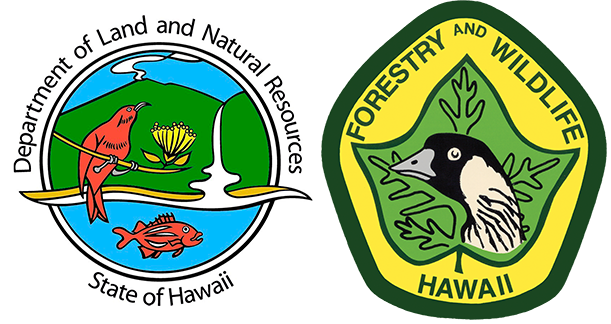Hawaiian Hoary Bat Guidance Document
Hawaiian Hoary Bat Guidance Document
2024-Hawaiian Hoary Bat Guidance Document Update and Request for Comments
The Division of Forestry and Wildlife (DOFAW ) is in the process of updating the last version of the guidance document (updated January 2021). Please send comments to [email protected] by April 9th, 2024. Responses and revisions based on public comments will be prepared by DOFAW for review by the Endangered Species Recovery Committee with the intent to ask for recommendation of final approval of the guidance document, or final approval with amendments.
2021- Hawaiian Hoary Bat Guidance January 2021 Update and Request for Comments.
Extensive revisions to the January 2020 version of the bat guidance have been completed based on additional information and comments. Public comments to this new update must be received by February 18, 2021 to be considered. Please send comments to [email protected]. Responses and revisions based on public comments will be prepared by DOFAW and the Hawaiian Hoary Bat Task Force for review by the Endangered Species Recovery Committee with the intent to ask for recommendation of final approval of the guidance document, or final approval with amendments.
Guidance Document:
- Hawaiian hoary bat guidance document draft (updated February 2024)
- Hawaiian hoary bat guidance document draft (updated January 2021)
- Hawaiian hoary bat guidance document draft (updated January 2020)
- Hawaiian hoary bat guidance document (2015 version)
Research Underway:
- USGS- Hawaiian Hoary Bat conservation genetics
- USGS- Modeling foraging habitat suitability of the Hawaiian Hoary Bat
- USGS- Hawaiian Hoary Bat movements, roosting behavior, and diet
- WEST- Acoustic sampling and occupancy of Hawaiian Hoary Bats on Oʻahu
Research Completed:
- USGS (2023) –Genetic diversity, structure, and effective population size of an endangered, endemic hoary bat ʻōpeʻapeʻa, across the Hawaiian Islands
- USGS (2023)-Multi-scale assessment of roost selection by ‘ōpe‘ape‘a the Hawaiian hoary bat (Lasiurus semotus)
- USGS (2023)-Seasonal and Elevational Differences by Sex in Capture Rate of ‘Ōpe’ape’a (Lasiurus semotus ) on Hawai’i Island
- R.D. Moseley, et al. (2022)-Hawaiian hoary bat responses to habitat, season, and non-native insectivore suppression
- West (2022)-O’ahu Hawaiian Hoary Bat Occupancy and Distribution Study 2022 Final Report
- H.T. Harvey (2022)- Home ranges, seasonal movements, habitat utilization, diet, and prey availability of Hawaiian Hoary Bat on Maui
- USGS (2021)-Hawaiian hoary bat acoustic surveys on Marine Corps Base Hawaii, 2019-2021
- USGS (2020)- Hawaiian hoary bat behavior at wind turbines on Maui
- USGS (2019)- Hawaiian hoary bat activity, diet and prey availability at the Waihou, Maui
Documented Threats to Hawaiian Hoary Bats
- J. Zimpfer & F. Bonaccorso (2010)-Barbed wire fences and Hawaiian hoary bats: What we know
Documented Threats to Bats Outside of Hawai’i
- I. Beattie, et al. (2022)-An investigation of bat mortality in British Columbia Canada
- K.M. Borkin, et al. (2022)-Bats attacked by companion and feral cats: evidence from indigenous forest and rural landscapes in New Zealand
- M. Oedin, et al. (2021)-Cats Felis catus as a threat to bats worldwide: a review of the evidence
- R.O.S. Khayat, et al. (2020)-Investigating cat predation as the cause of bat wing tears using forensic DNA analysis
- H. Edmonds, et al. (2017)-Survival of PIT-tagged lesser short-tailed bats (Mystacina tuberculata) through an aerial 1080 pest control operation
- C.F.J. O’Donnell, et al. (2017)-Controlling invasive predators enhances the long-term survival of endangered New Zealand long-tailed bats (Chalinolobus tuberculatus): Implications for conservation of bats on oceanic islands
- J.N. Welch, et al. (2017)-The threat of invasive species to bats: a review
- I. Ineich, et al. (2012)-Banded geckos, Gekko vittatus (Reptilia, Gekkonidae), as the main prey of barn owls (Tyto alba) on the Torres Islands (northern Vanuatu)
- J. Scrimgeour, et al. (2012)-Cat predation of short-tailed bats (Mystacina tuberculata rhyocobia) in Rangataua Forest, Mount Ruapehu, Central North Island, New Zealand
- D.R. Towns (2009)-Eradications as reverse invasions: lessons from Pacific rat (Rattus exulans) removals on New Zealand islands
- L. Granjon & M. Traoré (2007)-Prey selection by barn owls in relation to small-mammal community and population structure in a Sahelian argo-ecosystem
- J.R. Speakman (1991)-The impact of predation by birds on bat populations in the British Isles
Other Bat Documents:
